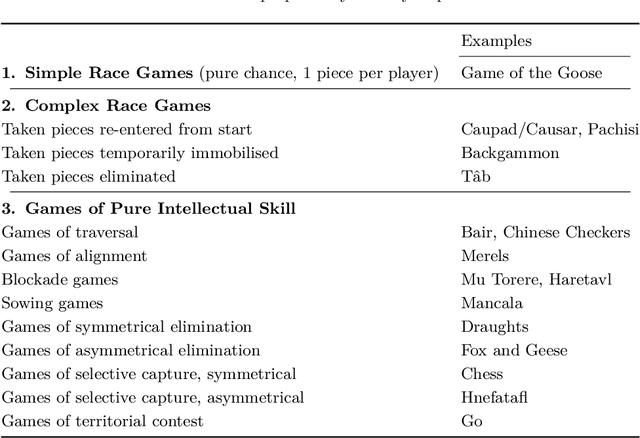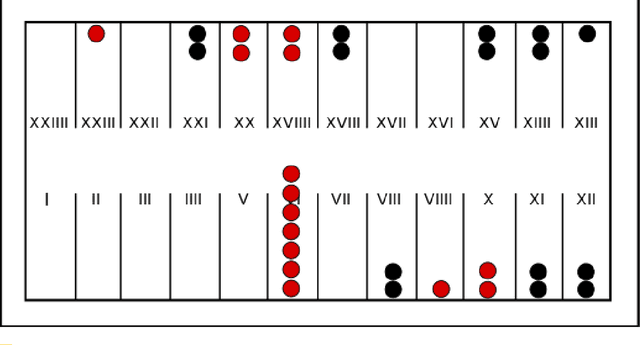Steven Kelk
Foundations of Digital Archæoludology
May 31, 2019



Abstract:Digital Archaeoludology (DAL) is a new field of study involving the analysis and reconstruction of ancient games from incomplete descriptions and archaeological evidence using modern computational techniques. The aim is to provide digital tools and methods to help game historians and other researchers better understand traditional games, their development throughout recorded human history, and their relationship to the development of human culture and mathematical knowledge. This work is being explored in the ERC-funded Digital Ludeme Project. The aim of this inaugural international research meeting on DAL is to gather together leading experts in relevant disciplines - computer science, artificial intelligence, machine learning, computational phylogenetics, mathematics, history, archaeology, anthropology, etc. - to discuss the key themes and establish the foundations for this new field of research, so that it may continue beyond the lifetime of its initiating project.
Discovery of Important Subsequences in Electrocardiogram Beats Using the Nearest Neighbour Algorithm
Jan 26, 2019



Abstract:The classification of time series data is a well-studied problem with numerous practical applications, such as medical diagnosis and speech recognition. A popular and effective approach is to classify new time series in the same way as their nearest neighbours, whereby proximity is defined using Dynamic Time Warping (DTW) distance, a measure analogous to sequence alignment in bioinformatics. However, practitioners are not only interested in accurate classification, they are also interested in why a time series is classified a certain way. To this end, we introduce here the problem of finding a minimum length subsequence of a time series, the removal of which changes the outcome of the classification under the nearest neighbour algorithm with DTW distance. Informally, such a subsequence is expected to be relevant for the classification and can be helpful for practitioners in interpreting the outcome. We describe a simple but optimized implementation for detecting these subsequences and define an accompanying measure to quantify the relevance of every time point in the time series for the classification. In tests on electrocardiogram data we show that the algorithm allows discovery of important subsequences and can be helpful in detecting abnormalities in cardiac rhythms distinguishing sick from healthy patients.
 Add to Chrome
Add to Chrome Add to Firefox
Add to Firefox Add to Edge
Add to Edge